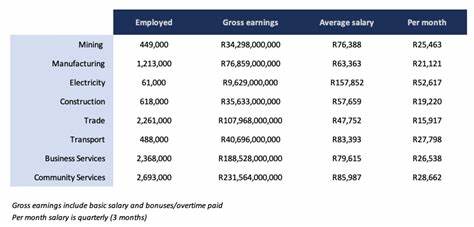AfriBet salary — what different roles tend to pay
| Brand | Bonus | Site |
|---|---|---|
| 100% up to €150 + 100 FS | Bet Now → | |
| 100% up to €100 | Bet Now → | |
| 100% up to €100 + 50 Free Spins | Bet Now → |
Ask for these concrete ranges during interview rounds: entry-level customer agent: $120–$300/month (~NGN 70k–350k); junior trading/support analyst: $250–$600/month (~NGN 150k–700k); mid-level backend/frontend developer: $700–$1,400/month (~NGN 420k–840k); senior trader/product manager: $1,500–$3,000/month (~NGN 900k–1.8M); head of operations/finance: $2,500–$5,000/month (~NGN 1.5M–3M). If you have specific remit over customer acquisition or revenue streams, push to the upper tercile of each band.
When negotiating, insist on measurable variable components tied to operational metrics: commission on handle (3–7% baseline, sliding to 8–12% for overperformance), monthly bonuses for reducing churn (set a target delta), and clear caps or thresholds for overtime. Require transparent reporting that includes market depth,ticket id,pre-match,bet builder,stake so you can verify commissions and dispute mismatches quickly.
For technical hires, link raises and bonuses to milestones: deliver an API for live prices that handles X concurrent requests, reduce latency by Y ms, or build a risk engine that lowers net liability by Z% per week. Traders and oddsmakers who can manage market depth and construct hedging strategies should ask for a profit-share clause (5–15% of net trading P&L attributable to their book) rather than a fixed bump.
Quick checklist to bring to interviews: a simple earnings model showing base + commission outcomes at three volume scenarios; examples of how you'll use ticket id data to audit pay; a proposal for bonus triggers tied to pre-match conversion and bet builder uptake; and a clause protecting minimum monthly wage if average stake or handle drops below forecast. Use those items to turn vague promises into contract language.
Highlights at a glance
Negotiate a package with a solid base compensation plus uncapped commission – target USD 8,000–18,000 base and 8–20% on net gaming revenue for commercial or trading positions. Pre-match traders typically handle 200–600 markets weekly; operations staff process 150–300 ticket id queries per day. Expect an average deposit of $6–$20 and an average stake per ticket of $2–$7; bet builder usage increases average stake by roughly 25–40%. Ask for bonuses tied to deposit growth, reduced chargebacks and bet builder uptake. For hiring, push for a clear split between base and variable, explicit commission calculation on settled stakes, training allowance, and SLA targets for ticket id resolution to protect income predictability.
Regional context at a glance
Benchmark compensation to local purchasing power: in East African hubs expect monthly compensation roughly $80–300, while southern markets commonly offer $200–600. Allocate recruitment budgets to include 10–25% statutory employer contributions and plan onboarding deposits or sign-on sums equal to 0.5–1.0 month of base pay. Prioritize markets with transparent market depth–these show tighter odds margins and steadier commission projections. In regions where market depth is shallow, rely more on bet builder products and limit average stake per ticket to control volatility. Set clear reporting for ticket id tracking and require candidates to demonstrate experience reconciling ticket ids after client deposits. For hiring plans, model three scenarios (conservative, median, aggressive) using local inflation rates, minimum wage baselines, and average monthly active users; adjust target compensation bands quarterly based on two-month rolling revenue and churn metrics.
Keeping bets responsible
Set clear limits: cap deposits and stakes before you bet. Recommend daily deposit limit of $50, weekly $200, monthly $600 or 1–2% of disposable monthly income. Use the platform’s bet builder sparingly: restrict selections to 3 per ticket and reduce stake by 50% for multi-leg combinations. Track every wager using the ticket id – log timestamp, market type (pre-match or live), stake and outcome for 30 days. If losses exceed three times a typical weekly entertainment budget, activate a 48–72 hour cooling-off and temporary self-exclusion. For new accounts, apply a 7-day probation with max deposit $100 and max pre-match stake $20. Enable reality checks every 30 minutes and require extra verification for deposits over $500.
Short FAQs that save time
Always check market depth before placing a stake; thin books raise cancellation risk and large price swings.
- Deposit processing: cards and mobile wallets usually clear within minutes; bank transfers take 1–3 business days. Complete KYC to avoid holds.
- Finding a ticket id: it’s shown on the confirmation screen, email and SMS–save it for disputes or cashouts.
- Stake limits: ceilings vary by sport and account tier; high-profile pre-match events typically accept larger stakes than niche fixtures.
- Missing payout: supply the ticket id, timestamp, market name and stake receipt to support with screenshots for faster resolution.
- Price behavior: pre-match odds lock at placement; live bets move quickly with market depth and match incidents.
- Fees and limits: fees differ by channel; cards/wallets often fee-free. Verified deposit history usually increases personal stake caps.
Payout limits in everyday terms
Set firm caps: single-payout maximum $2,500, daily payout ceiling $10,000 and weekly cap $25,000. Use smaller limits for bet builder tickets – cap combined returns from a single bet builder at $1,200. When placing a deposit, set an auto-limit to avoid overspending. Size stakes to no more than 1–2% of your bankroll on single selections and cut to 0.5–1% for long-odds accumulators. Monitor market depth; thin markets can trigger sudden odds swings and justify lower exposure. Always record the ticket id and time stamp for any large wins or disputes. If a ticket exceeds your personal limit, flag it immediately with support and freeze further bets until cleared. These numbers work as a practical starting point – adjust caps upward or downward based on monthly results, but keep the same percentage-based stake rules.


